Measurement Teaching Resources
Is your math class ready to dive into length measurement, measuring objects, and more measurement practice? Say hello to printable measurement worksheets, games, and digital activities created by teachers for elementary teachers!
This collection of teaching resources was created by our expert math teachers to help students meet Common Core and state-level standards. Each printable and digital download has undergone a rigorous review by the teachers on the Teach Starter team to ensure they’re student-ready — so you can cut down on lesson planning time!
New to teaching this part of the math curriculum? Our teacher team knows what it’s like to suddenly teach a brand-new grade level, so we’ve put together a quick guide to teaching measurement!
What Are the 4 steps of Teaching and Learning Measurement?
Elementary students have to learn a long list of measurement concepts during their stint in elementary school, including:
- length
- liquid volume
- elapsed time
- mass (weight)
- area
- volume of three-dimensional figures
The good news for teachers: Most measurement concepts have very real-world applications for students. That means there's a whole world of ways to get students excited about reading a ruler or tape measure or weighing heavy objects on a scale.
But before you can get there, let's start with the basic steps to work through when you're teaching students how to measure ... well ... anything!
- Direct comparison — One of the earliest steps of learning measurement is learning the attributes that are being measured. For example, students need to learn what length is if they're ever going to measure it. That's where direct comparison (and step 2, indirect comparison), come in. If you put 2 objects side by side, students can directly compare which is longer and which is shorter and start to understand how to measure an object.
- Indirect comparison — What happens when you can't directly compare two objects? You can add a third as a reference point for indirect comparison, thereby increasing student understanding of the attribute being measured.
- Measuring with non-standard units or informal units — Just as students need to understand the attribute of measuring, they also need to understand the concept of the units we use to measure such as inches or pounds. Using non-standard units is the first step to teaching the concept of units, offering students the chance to work with different objects, counting how many of these "units" it takes to make up another. This is the fundamental base of measurement.
- Measuring with standard units — Finally, in the final step of teaching measurement, students move on to using the formal units of measurement and learn to use measurement instruments.
Why Is Teaching Measurement Important?
There are concrete uses for learning measurement that will surely spring to mind — from using a tape measure to measure a space in a home to weighing ingredients when baking to determining the capacity of a juice glass before pouring in the liquid. These are all means for quantifying our environment.
But the benefits of teaching students about measuring lines with a ruler or figuring out mass measurements from largest to smallest go well beyond the obvious. Learning to measure helps students develop spatial and number skills.
- Free Plan
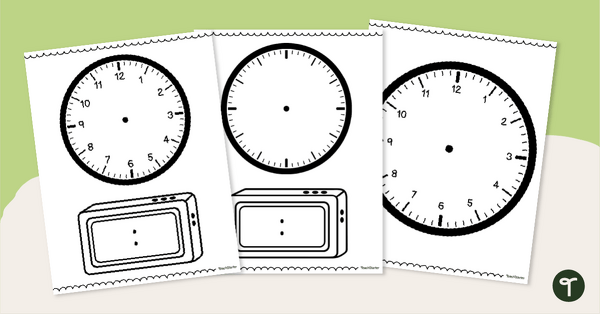
Blank Digital and Analog Clock Templates
Practice writing the time in digital and analog form with this set of blank clock faces.
- Free Plan
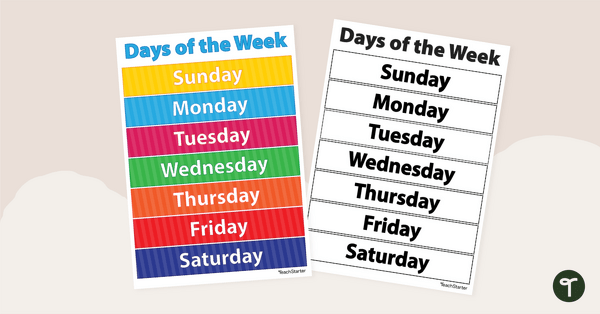
Days of the Week Poster
Display the days of the week with a bright and cheery Days of the Week poster for your classroom.
- Free Plan
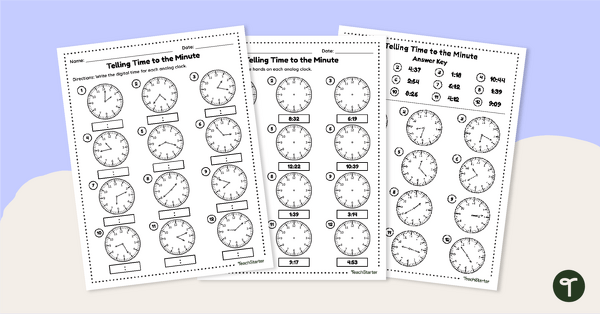
Free Telling Time to the Minute - Worksheet Pack
Practice telling time to the minute by writing the digital time and drawing the hands on analog clocks.
- Free Plan
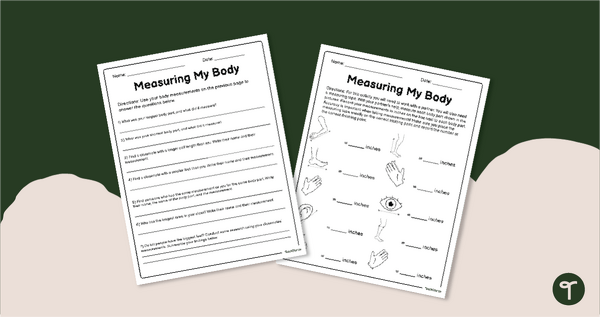
Measuring My Body – Length Worksheet
Explore linear measurement with an engaging collaborative activity where students measure different body parts and compare them
- Free Plan
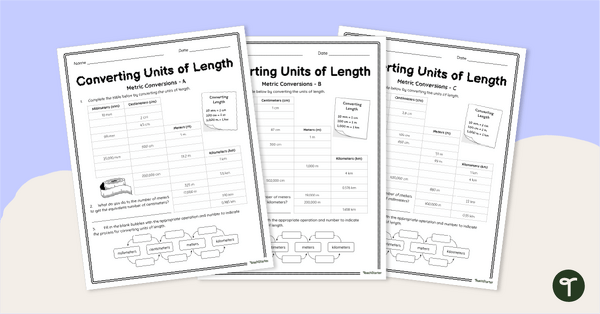
Converting Units of Length – Worksheets
Demonstrate an understanding of decimal representations while converting metric units of length with printable conversion worksheets.
- Plus Plan
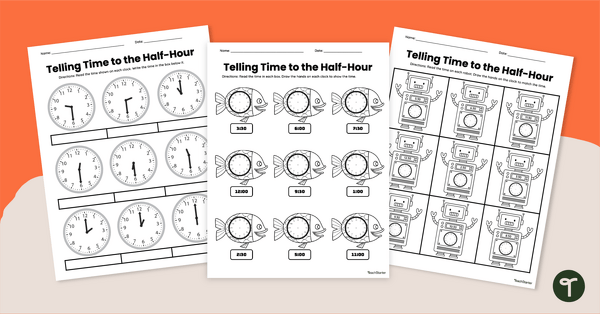
Telling Time to the Hour and Half-Hour - Worksheet
Practice telling time to the half-hour with a fun set of printable Telling Time Worksheets for 1st grade.
- Free Plan
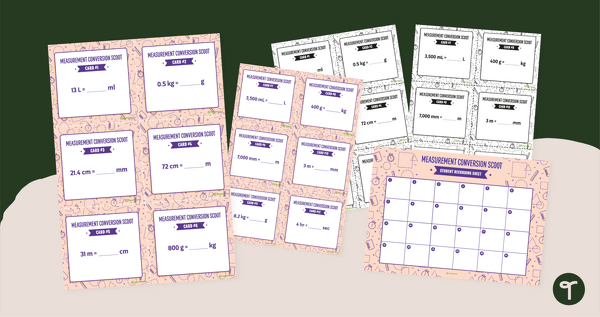
Measurement Conversion Game - SCOOT!
Grab a handy set of 24 measurement conversion task cards to use as a whole class scoot activity.
- Free Plan
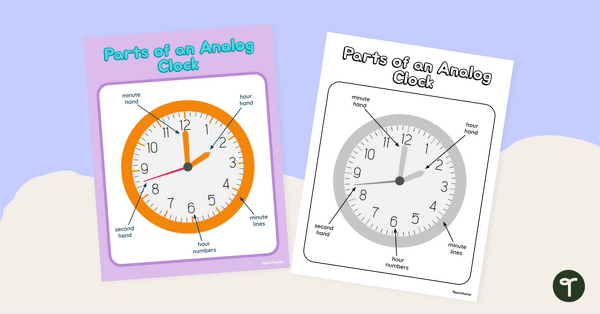
Parts of a Clock Anchor Chart
Familiarize students with the analog clock face, hands and other parts of a clock with a printable poster created for the primary classroom.
- Free Plan
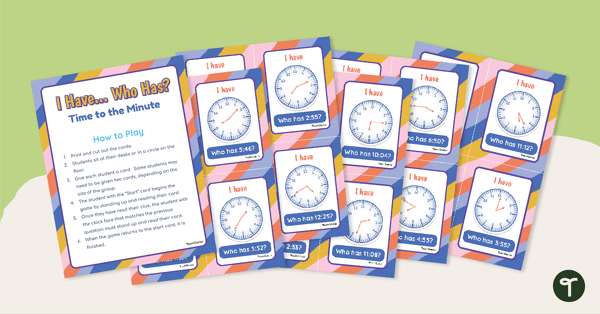
I Have, Who Has? - Time to the Minute
Practice telling time to the nearest minute with this set of “I Have, Who Has” game cards.
- Plus Plan
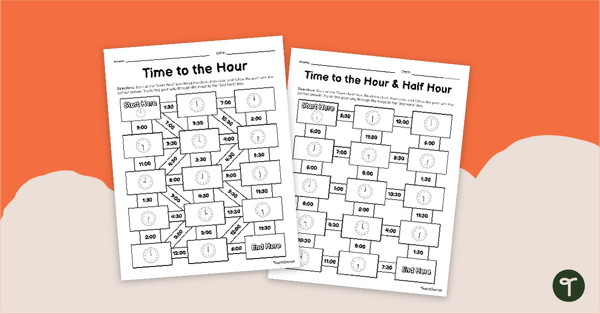
Time to the Hour and Half Hour - Math Mazes
Engage your students with exciting telling time practice activities with a set of printable Time to the Hour and Half Hour Math Mazes.
- Free Plan
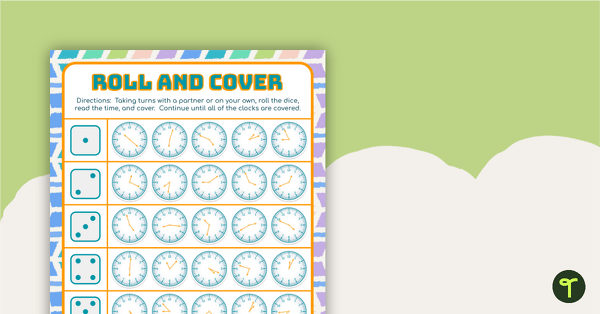
Roll and Cover – Telling Time to the Minute
Practice telling to the minute with this roll and cover game
- Plus Plan
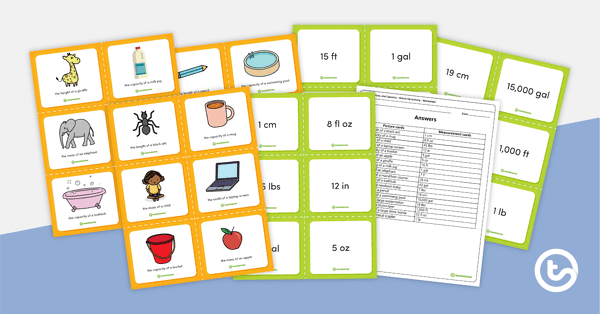
How Much Does It Measure? Match-Up Activity (Length, Mass, and Capacity)
A set of 18 match-up cards to reinforce measurement concepts of length, mass, and capacity.
- Plus Plan

Mini-Mystery – Who Won the Race?
A fun, logic-based activity where students read clues to solve a mystery.
- Plus Plan
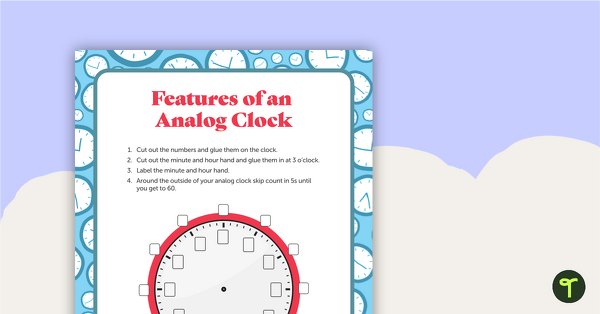
Analog Clock Features
Students create their own analog clock by cutting and pasting the parts of an analog clock on a template.
- Plus Plan
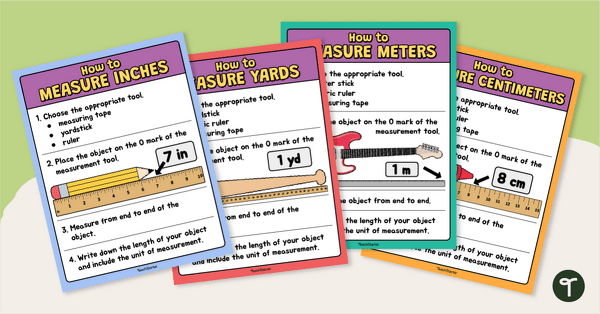
Using a Ruler - Anchor Charts
Discover how to use a ruler to measure in inches, feet, yards, and centimeters with a set of printable measurement anchor charts.
- Free Plan
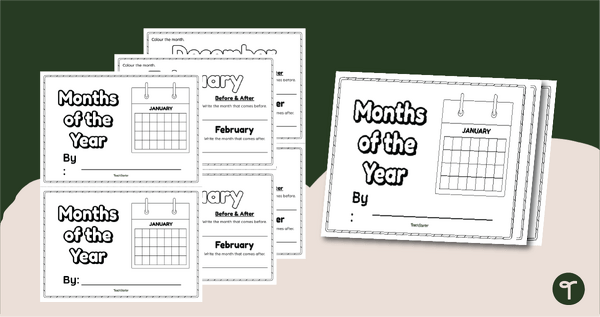
Months of the Year Printable Activity Book
Create months of the year booklets to help your students identify, sequence and spell the months in a year.
- Plus Plan
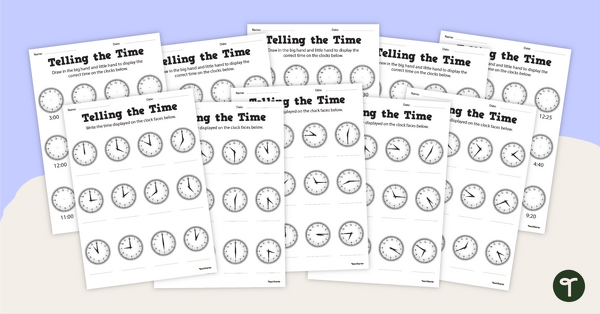
Telling Time - Worksheets
Practice telling time on a clock with a set of 5 printable telling time worksheets.
- Free Plan
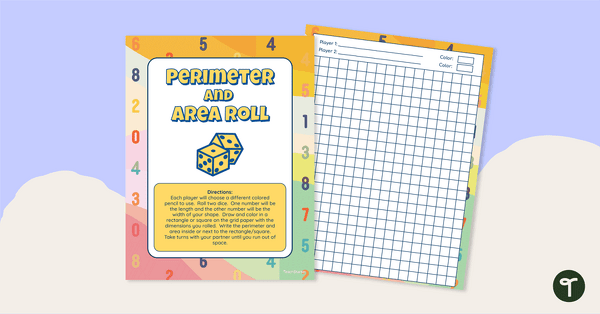
Perimeter and Area Dice Game
Use this area and perimeter dice game as a math center activity when teaching area and perimeter to your 3rd and 4th graders.
- Plus Plan
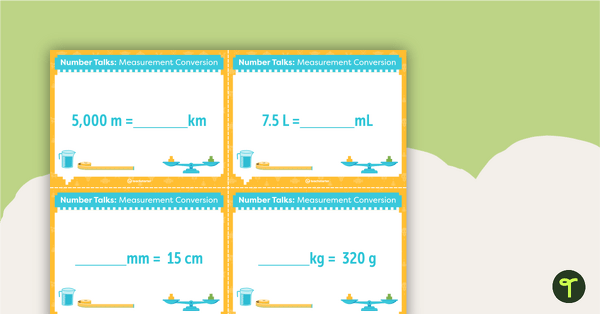
Number Talks - Measurement Conversion Task Cards
Build number sense skills with this set of 40 task cards.
- Plus Plan
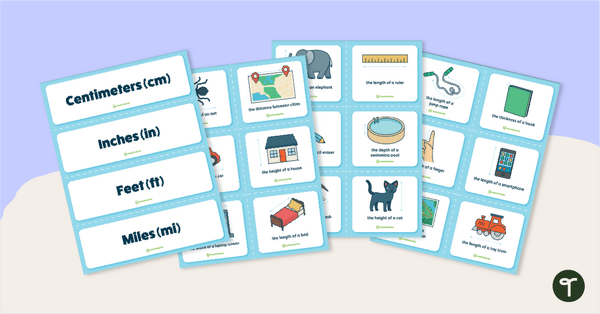
Selecting Units of Length – Sorting Activity
Use a sorting activity to help students identify lengths and distances that should be measured in centimeters, inches, feet, and miles.
- Free Plan
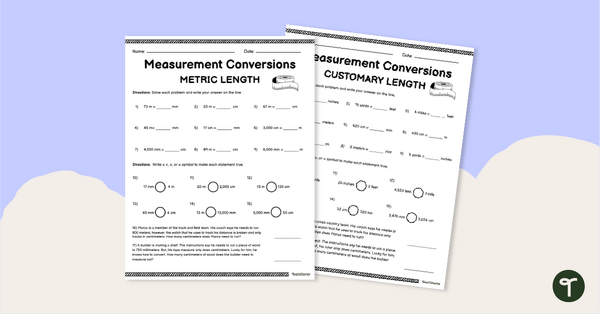
Measurement Conversions - Length – Worksheet
Use ratio reasoning to practice converting length measurements with this worksheet.
- Plus Plan
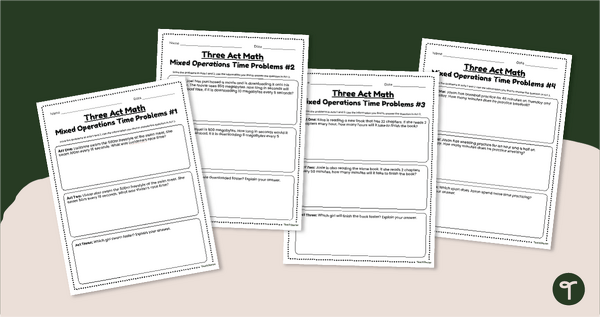
3-Act Math Tasks - Time Conversion Worksheets
Practice problem-solving skills and time conversions with a printable pack of 3 Act Maths Task worksheets.
- Free Plan
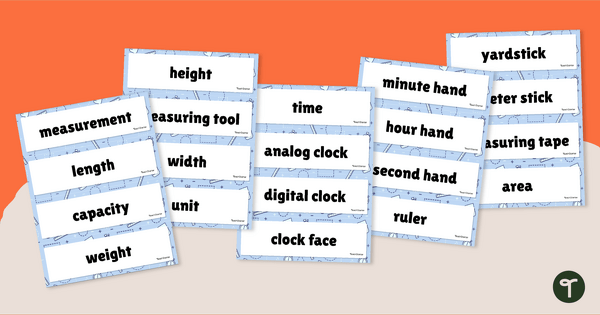
Units of Measurement Word Wall Vocabulary
Print a pack of measurement vocabulary cards to help your students review academic vocabulary.
- Free Plan
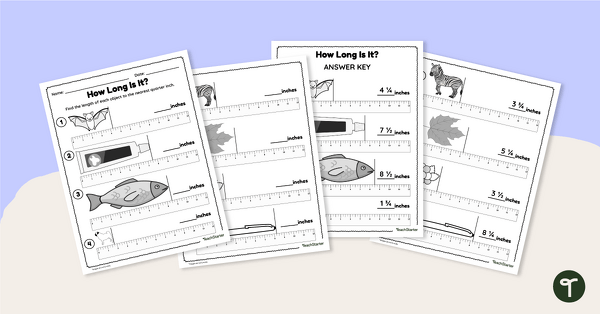
How Long Is It? Measuring to the Nearest Quarter Inch Worksheet
Practice measuring to the nearest ¼ inch with this 8-question worksheet.
- Plus Plan
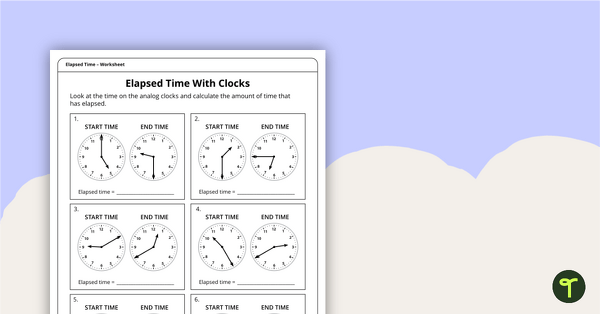
Elapsed Time With Clocks – Worksheet
A worksheet for students to practice calculating elapsed time.
- Free Plan
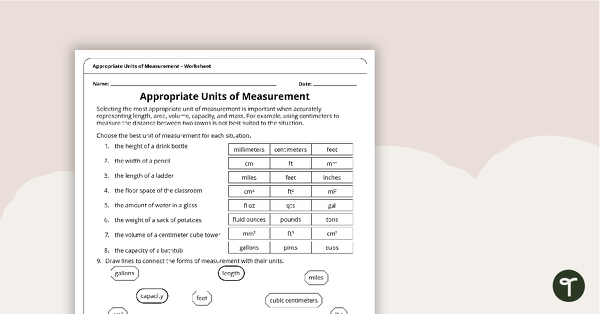
Appropriate Units of Measurement – Worksheet
A worksheet that allows students to choose appropriate units of measurement.
- Free Plan
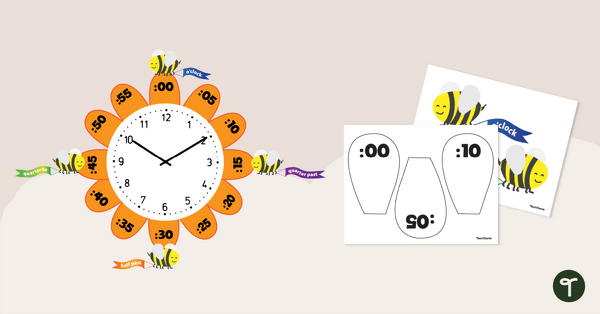
Classroom Clock Labels - Flower Time Petals
Use our Flower Wall Clock Labels to create a spring-themed display to help children read the time.
- Free Plan
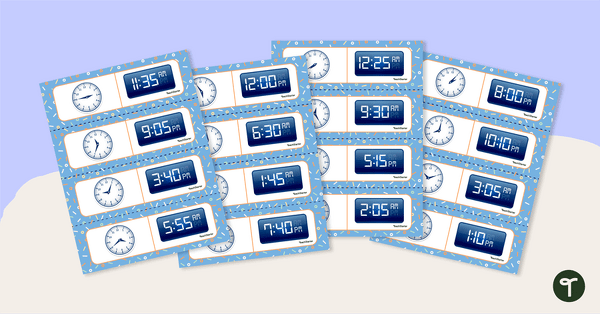
Time Dominoes - Five Minute Intervals
Practice telling time to the nearest 5 minutes by matching 32 analog and digital clock dominoes.
- Plus Plan
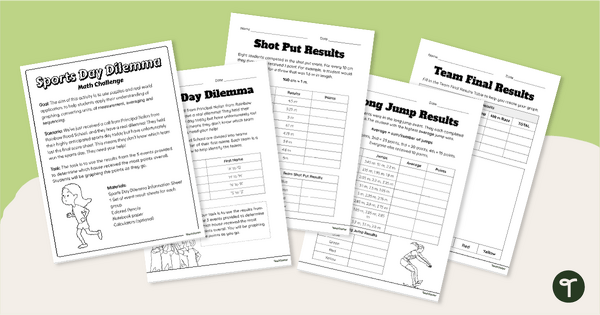
Sports Day Dilemma - Metric Conversions Math Task
Engage students with a real-world application of measurement conversions with Sports Day Dilemma, a metric conversion math task!
- Plus Plan
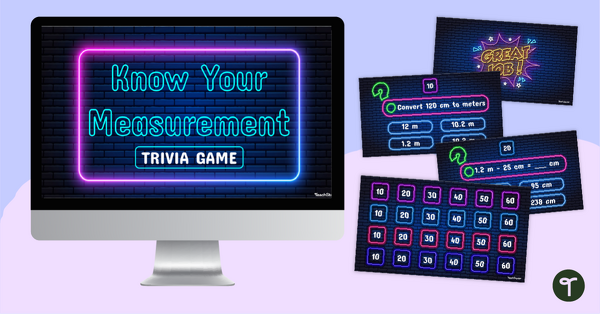
Know Your Measurement Conversions Interactive Game
Practice measurement conversions involving time, length, capacity, and volume with an exciting Know Your Measurement! Trivia Game!
- Free Plan
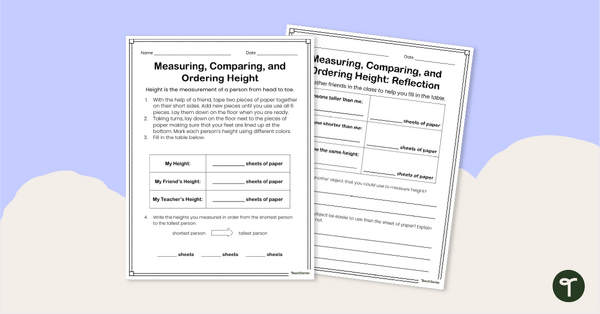
Measuring, Comparing, and Ordering Height – Worksheet
Measure length using informal units with an engaging hands-on collaborative measurement activity.
- Plus Plan
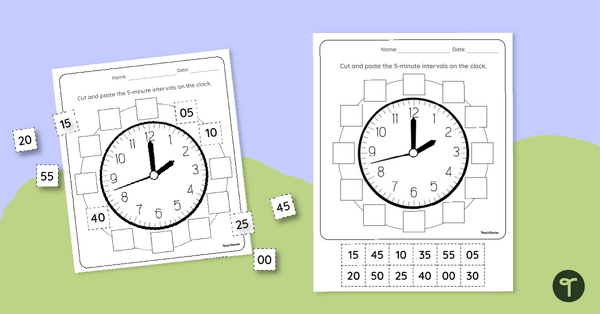
Clock Worksheet Cut and Paste– 5-Minute Intervals
Use a clock worksheet to cut, paste and build a clock with five minute increments.